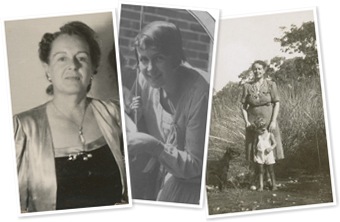Andrew Leslie Michel (always known as Les) was born on 21 January 1900 in the small town of Lowood in southeastern Queensland (not far from Ipswich). He was the younger of twins, the 9th and 10th children of Ewald Michel and his wife Gertrude Isabella, nee Ihle.
This part of Queensland had been settled by German immigrants in the second half of the 19th century and German names and families were very common, well into the 20th century.
Ewald was born in Germany in the village of Huckeswagen, near Cologne, and came to Australia at the age of three, along with is parents and some siblings. His mother died in Brisbane shortly after they arrived and his father, Johannes, with his four children, took up farming land at Fernvale, near Lowood.
Gertrude was born in Picton in the southern highlands of New South Wales. Her father was German and her mother English. They moved to Fernvale when she was a small child. Her father died when she was six and she was raised after that by her paternal uncle and his wife. Her mother’s story (Amelia Barrett) has already been told in this blog.
At the time Les was born, his father owned a small general store in Michel Street, Lowood (the street was named after him). Les’s oldest sisters were already married by 1900 and Les and Eddie (his twin) were uncles before they were born. Les went to Lowood Stage School and acquitted himself well enough to be employed by the Commonwealth Bank, eventually rising to the level of accountant. He kept this employment at least into the late 1930s, although during the worst of the Great Depression, he was working part time at the bank.
He was just too young to serve in World War I. We don’t know if the family suffered any discrimination or hardship at that time because of their German heritage – perhaps not, in that very German corner of Queensland.
By 1923, Ewald’s business had gone bankrupt. He was known as a kind and generous man who gave credit freely in his store. Many unpaid debts led to the end of his business and Ewald and Gertrude were living in Northgate, a suburb of Brisbane and Ewald’s health was failing.
On 14 August 1924, Les married Irene Eastment, from Warwick. Her father strongly disapproved of the marriage, because of Les’s German parentage. Irene always insisted that the surname be pronounced in the French way, as mishel, although the rest of the family pronounced it as Mikkel or even Michael. This pronunciation difference between the branches of the family still persists, nearly a century later.
The young couple moved to Sydney, probably for Les’s job, and lived mostly in the inner western suburbs, eventually settling in their own home at 13 Agnes Street, Strathfield. They had four children:
Irene Merle (always known as Merle) born 24 August 1925
Shirley Mavie born 10 January 1927
Valmai June, born 17 June 1929; and
David Francis, born 6 August 1931.
Shirley died on & February 1928 at the age of thirteen months, from gastroenteritis. Merle was also gravely ill at that time but, being slightly older and stronger, survived.
Les and Irene’s marriage deteriorated and in 1939 Les left the family in Sydney and eventually enlisted in the Australia Army. He rarely saw his children (then aged 14, 10 and 8) again, and then only after they were adults. It is believed that Irene actively prevented him from seeing them immediately after he left, and then the war intervened.
In 1961 Les went to Perth as Manager of the Papuan Empire Games team, and saw his daughter Merle for the first time for many years. He told her that he never knew why his marriage broke up, and that when he met her Irene was the prettiest girl in Warwick.
On his way home Les also called on Valmai and her husband Colin Strathearn in Sydney. As Irene was present this meeting was rather difficult, but both Valmai and Colin felt they could have gotten on well with him. Indeed, Merle and her husband in Perth felt the same way.
Not long before she died, Irene told Valmai that, if she had her life to live again, she would have done everything possible to prevent the breakup of her marriage. Apparently the main reason for this breakup was the fact that Irene felt that Les had been “spoiled rotten” by his mother, and this was later confirmed by Michel relations who remembered that Gertrude had lavished all her love and attention on Les, while his twin brother, Edgar, had been more or less brought up by one of his older sisters. Despite this fact, Irene stated that she was very fond of Gertrude, and that she was a fine woman.
In December, 1978, Valmai, who had traced some of her father’s cousins, and had been in correspondence with some of them, went with her husband and daughter to Brisbane, and met with all of them who could arrange to be there. They had all been very fond of Les, and were always glad to see him. They were all very pleasant, friendly people, and made Valmai and her family most welcome.
During the War, Les had become fond of New Guinea and its people and, after his discharge from the Army, was employed by Adelaide Steamships Limited as an accountant in its Port Moresby office. He re-married in the early 1950s to Anne. There were no children from this marriage.
In Port Moresby, Les worked with the children of the town, particularly in the area of sport and, in 1963 was awarded the MBE for his efforts.
Ex “South Pacific Post”, Port Moresby, June 11, 1963
M.B.E. for MICHEL: Canberra, Monday: Five men with Territory links have been honoured by the Queen in the Birthday Honours List. Among them is the father of Territory sport, Leslie Andrew Michel (sic), who has been made a Member of the Order of the British Empire.
The citation reads, “Since 1952 he has been prominent in many sporting activities in Port Moresby, particularly for the native population. In recognition of his fine contribution in the sporting interests of Port Moresby.”
Mr Michel has been an accountant and secretary employed by Steamships Trading Company since 1952. He was the driving force behind efforts to send a Territory team to last year’s Commonwealth Games at Perth and is now a senior official of the organization sending Papuan, New Guinean and Australian athletes to Suva.
Mr. Michel is a respected authority on cricket and Rugby League and is well-known to eminent sporting officials throughout Australia.
For several years most of his leisure hours have been spent in the administration of sport. He has worked selflessly for the full integration of sport in all fields and encouraged the expansion of all sports among Papuans. The honour bestowed on him will be welcomed by people of all races.”
“Rotary Newsletter”, Port Moresby, June 11, 1963:
“Congratulations ’96 LES MICHEL ROTARY ‘SPORT TERRITORY HONOURED
Some of us heard the news when the Australian Saturday morning papers arrived in Port Moresby. Others heard the news, as it was learnt from the Australian papers, and word passed here and there, and especially at the Sogeri Show. Yet others heard the news for the first time on Sunday night, during the A.B.C. Territory news-session.
Her Majesty, Queen Elizabeth, honoured Rotarian Les Michel, by making him a Member of the Order of the British Empire.
It was typical of Les Michel, the real man, that he replied to a congratulatory telephone call on Sunday night: “Of course I’m honoured and happy at receiving the award. But … ” “But what?” “Well, I’ve been mixed up in sport a lot, and I feel that the honour is also a tribute to sport.” Who will argue? But the award is a tribute to Les Michel, the man. Les Michel, the citizen. Les Michel, the sportsman. To his years of unselfish work. The public knows a lot about what Les Michel has done. He is chairman of the Empire Games Association. Chairman of the Fund Raising Committee of the Territory’s South Pacific Games Association.
But few people – perhaps only his wife, Rotarianne Anne Michel – could have an idea of all the work he does behind the scenes. The raffle tickets he’s sold. The football programmes he’s written – and sold, too. His love of sport is wide – football, basketball, and, yes, believe it or not … cricket!
Les Michel is one person, at least, who has a true concept of the value of sport in a multi-racial society such as Papua and New Guinea.
If there is one place where a person can achieve results, according to merit, it’s on the field of sport. White man, black man, yellow, red, or any other colour, atheist, Christian, communist, Hindu, or any other faith, or lack of faith, all men and women, fellow humans, can reach a common meeting place in sport. People of different cultures, education, ideas, have the same motivation in a 100-yard spring, in a soccer, basketball, cricket, or tennis match.
Somewhere, in the long ago, the voice of England echoed through schoolrooms throughout the world in the words: “Play up, play up, and play the game!”
You play the game, according to the rules, and you win or lose, according to the rules, and character and understanding and comradeship and the Australian word, “mateship” (which is not out of date as the alleged sophisticates claim) have a chance to develop.
These are some of the thoughts that occur when one thinks about Les Michel. He is, in some ways, a complex man – and yet a simple man. He has a gift for winning friends, who will do a great deal for him. He is an earthy man. He is a human being. He has a rough, male sense of humour. He is not a rich man, as far as this world’s material goods are concerned, but he is rich in the possessions that count. He is, perhaps, too generous in the expenditure of his time and energies for any cause he thinks worthwhile.
He has the qualities that make a Rotarian. Our Rotary Club, Rotary throughout the Territory, Rotary everywhere to some extent at least, shares the honour the Queen has bestowed upon Les Michel.”
Les retired in 1965 and returned to Sydney, living in Ashfield with his wife. He died on 16 March 1968 when his heart failed following an operation to remove a brain tumour. He was cremated at Rookwood Crematorium and his ashes were interred there.
As the only one of his children in Sydney at the time of his death in 1968 of heart failure following an operation for a brain tumour, Valmai attended his funeral at Ashfield with her husband, rather unwillingly. During the service the minister spoke especially about the work Les Michel had done with young people, and her thought at that point was “he did nothing for his own children.”
Ten years later, at the reunion in Brisbane mentioned, she met Les’ twin brother’s daughter – Beth – almost exactly the same age as herself, of whom she had never heard until that day. Beth remembered her Uncle Les well, as apparently he visited his brother’s family quite often, and she also remembered the gifts he brought and the relationships he had with the children. The thought then arose in Valmai’s mind: “Did he neglect his own children by his own choice?”
Read Full Post »
 A cherished family portrait, which was actually reprinted for us by the original photographer’s firm in the early 1980s. Unfortunately, while having the photograph is amazing, the only source we have for who is in the photo is the couple’s daughter, who wasn’t born until twelve years after the event.
A cherished family portrait, which was actually reprinted for us by the original photographer’s firm in the early 1980s. Unfortunately, while having the photograph is amazing, the only source we have for who is in the photo is the couple’s daughter, who wasn’t born until twelve years after the event.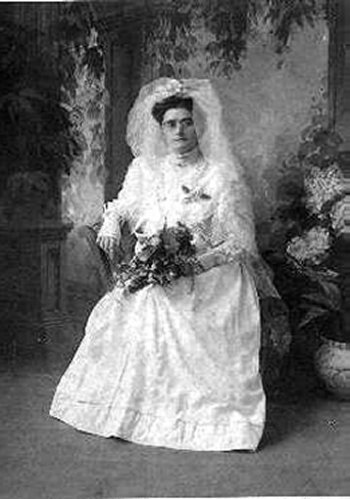







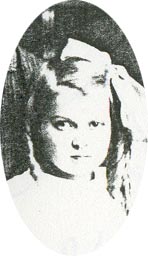
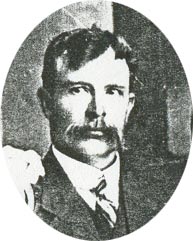

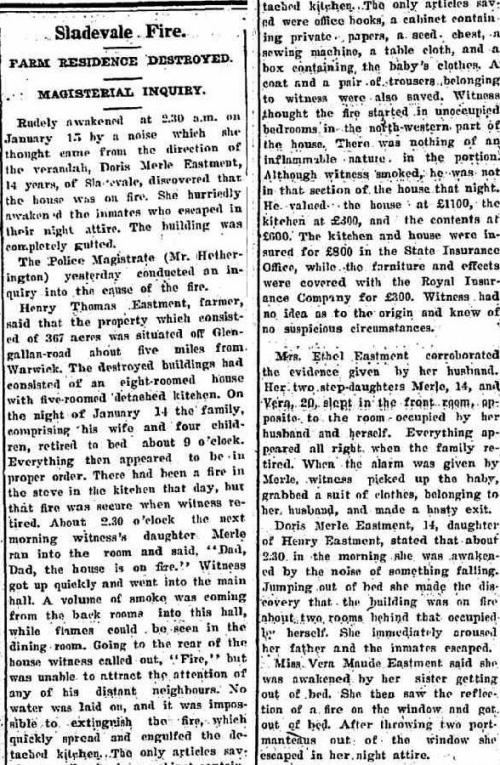

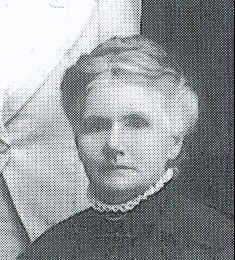









 , Valmai June and David Francis. Shirley died at the age of 13 months from gastroenteritis, and Merle was also very sick at that time.
, Valmai June and David Francis. Shirley died at the age of 13 months from gastroenteritis, and Merle was also very sick at that time.

